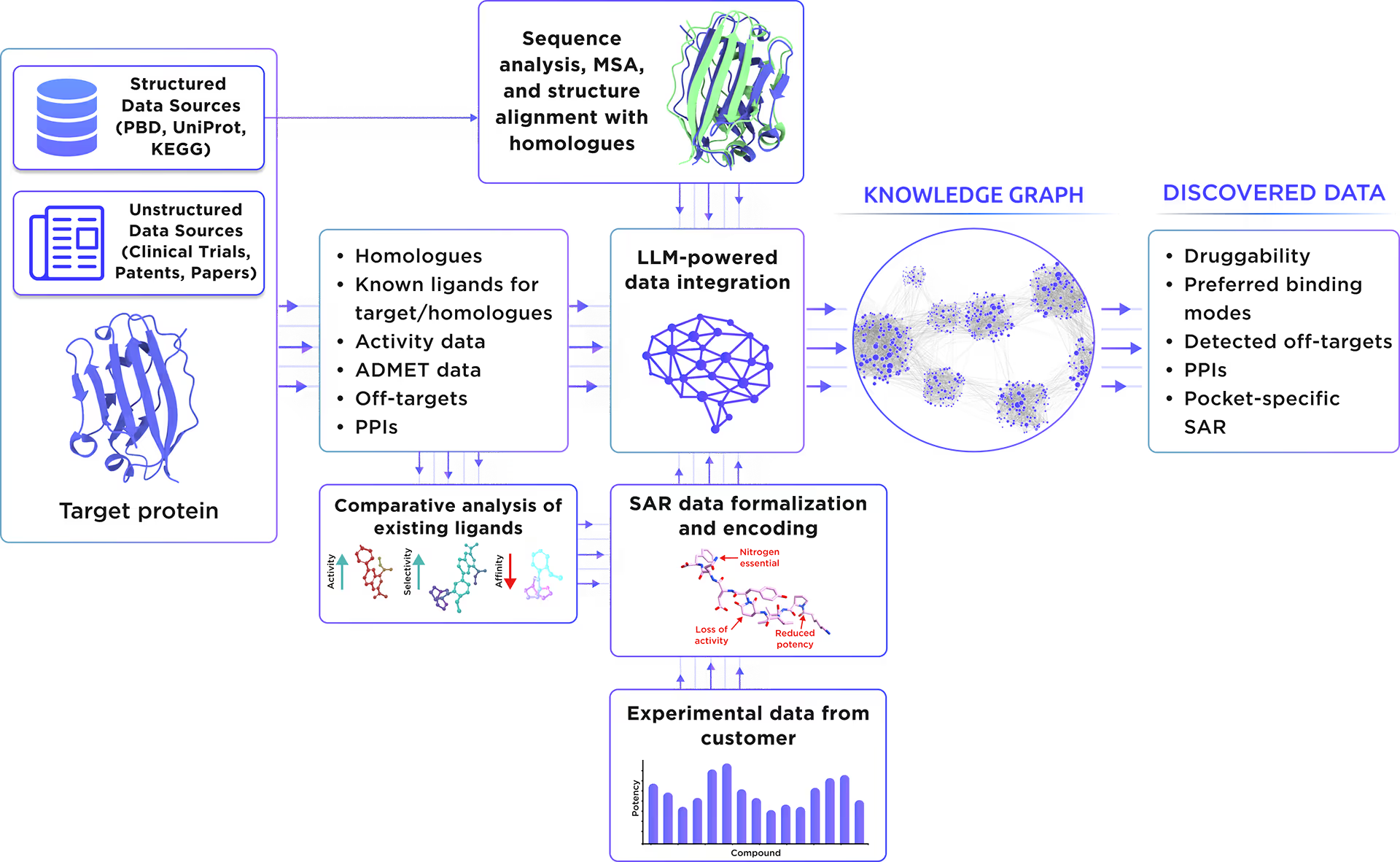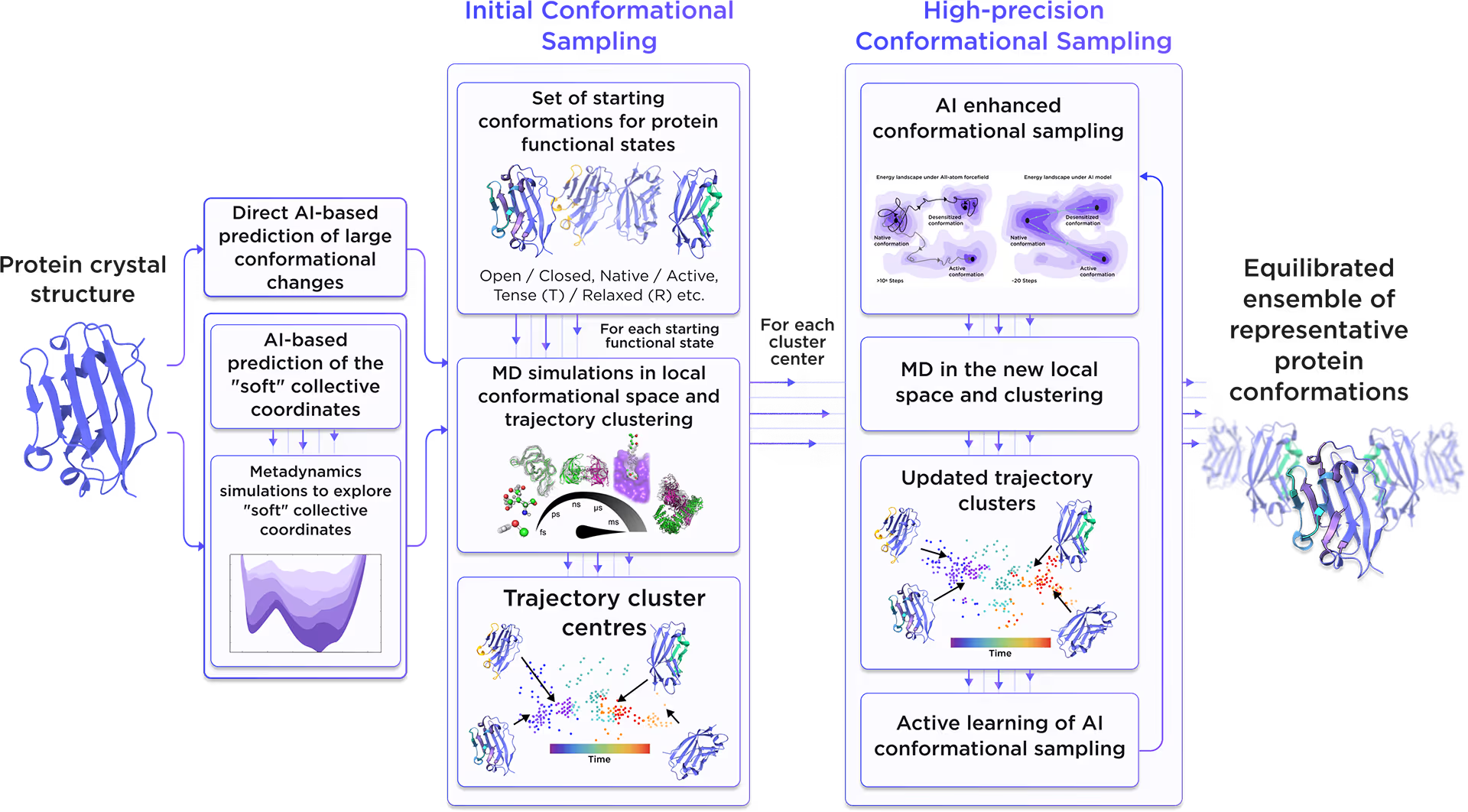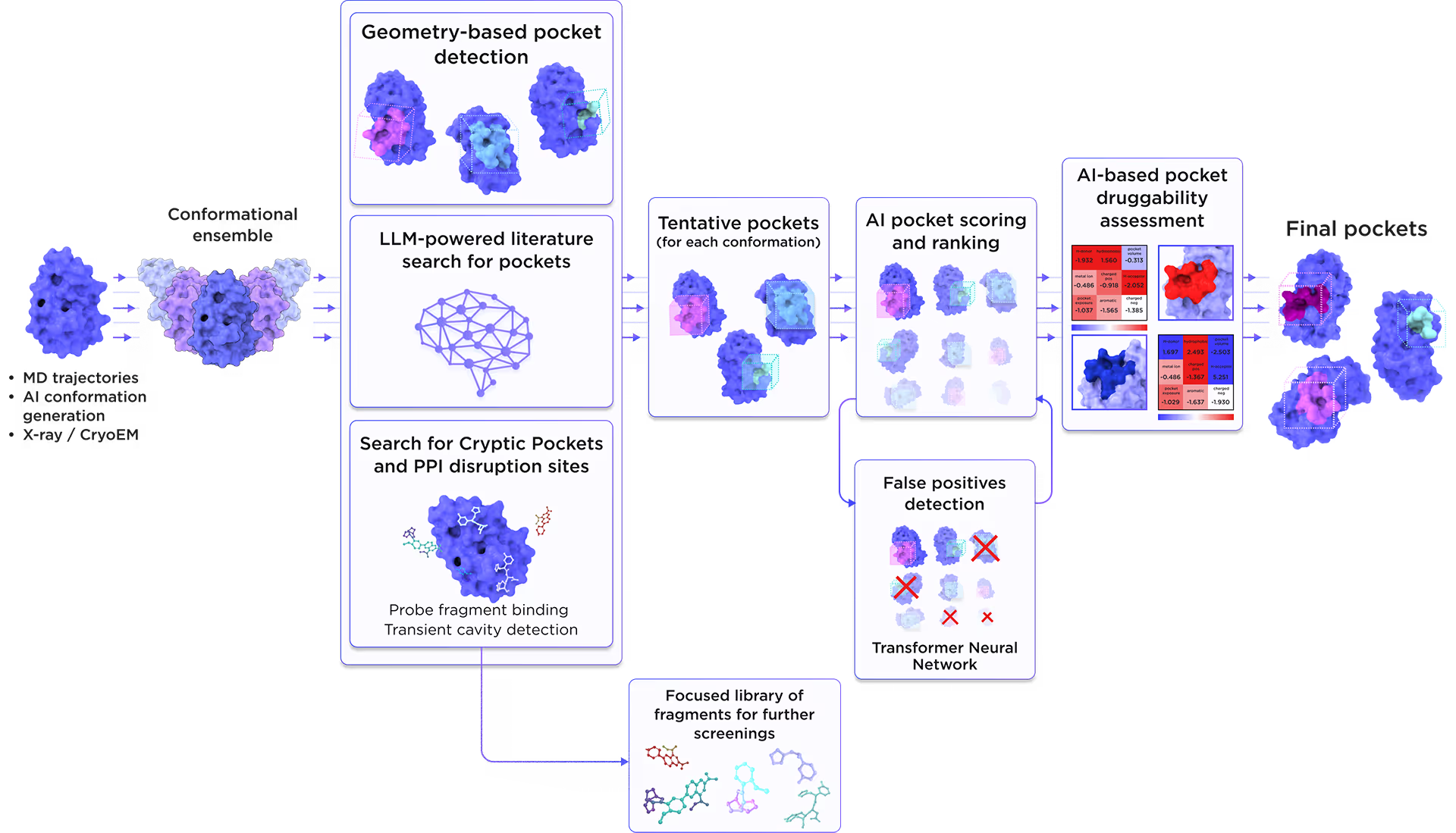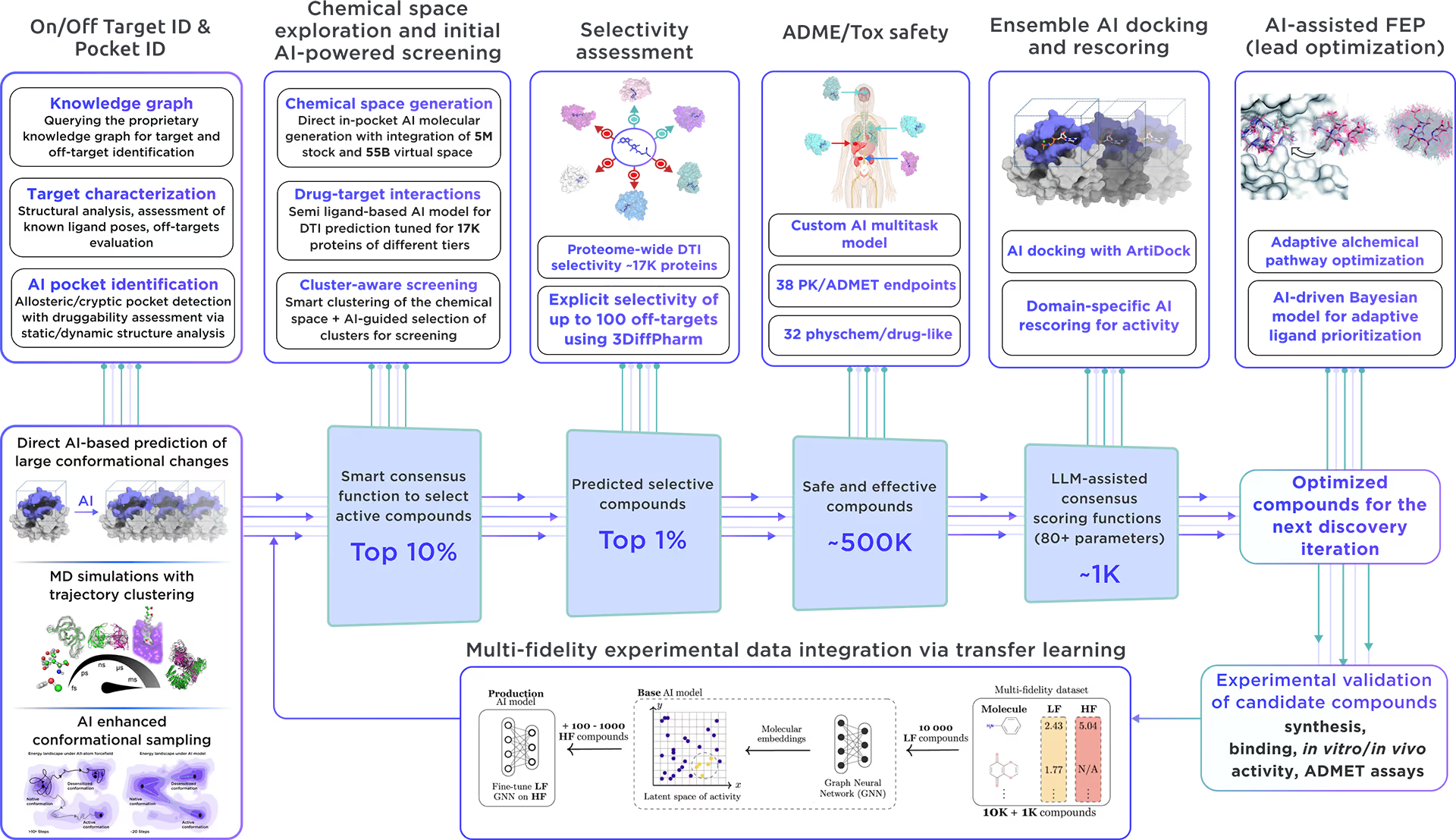

Available from Reaxense
This protein is integrated into the Receptor.AI ecosystem as a prospective target with high therapeutic potential. We performed a comprehensive characterization of Mediator of RNA polymerase II transcription subunit 12 including:
1. LLM-powered literature research
Our custom-tailored LLM extracted and formalized all relevant information about the protein from a large set of structured and unstructured data sources and stored it in the form of a Knowledge Graph. This comprehensive analysis allowed us to gain insight into Mediator of RNA polymerase II transcription subunit 12 therapeutic significance, existing small molecule ligands, relevant off-targets, and protein-protein interactions.

Fig. 1. Preliminary target research workflow
2. AI-Driven Conformational Ensemble Generation
Starting from the initial protein structure, we employed advanced AI algorithms to predict alternative functional states of Mediator of RNA polymerase II transcription subunit 12, including large-scale conformational changes along "soft" collective coordinates. Through molecular simulations with AI-enhanced sampling and trajectory clustering, we explored the broad conformational space of the protein and identified its representative structures. Utilizing diffusion-based AI models and active learning AutoML, we generated a statistically robust ensemble of equilibrium protein conformations that capture the receptor's full dynamic behavior, providing a robust foundation for accurate structure-based drug design.

Fig. 2. AI-powered molecular dynamics simulations workflow
3. Binding pockets identification and characterization
We employed the AI-based pocket prediction module to discover orthosteric, allosteric, hidden, and cryptic binding pockets on the protein’s surface. Our technique integrates the LLM-driven literature search and structure-aware ensemble-based pocket detection algorithm that utilizes previously established protein dynamics. Tentative pockets are then subject to AI scoring and ranking with simultaneous detection of false positives. In the final step, the AI model assesses the druggability of each pocket enabling a comprehensive selection of the most promising pockets for further targeting.

Fig. 3. AI-based binding pocket detection workflow
4. AI-Powered Virtual Screening
Our ecosystem is equipped to perform AI-driven virtual screening on Mediator of RNA polymerase II transcription subunit 12. With access to a vast chemical space and cutting-edge AI docking algorithms, we can rapidly and reliably predict the most promising, novel, diverse, potent, and safe small molecule ligands of Mediator of RNA polymerase II transcription subunit 12. This approach allows us to achieve an excellent hit rate and to identify compounds ready for advanced lead discovery and optimization.

Fig. 4. The screening workflow of Receptor.AI
Receptor.AI, in partnership with Reaxense, developed a next-generation technology for on-demand focused library design to enable extensive target exploration.
The focused library for Mediator of RNA polymerase II transcription subunit 12 includes a list of the most effective modulators, each annotated with 38 ADME-Tox and 32 physicochemical and drug-likeness parameters. Furthermore, each compound is shown with its optimal docking poses, affinity scores, and activity scores, offering a detailed summary.
Mediator of RNA polymerase II transcription subunit 12
partner:
Reaxense
upacc:
Q93074
UPID:
MED12_HUMAN
Alternative names:
Activator-recruited cofactor 240 kDa component; CAG repeat protein 45; Mediator complex subunit 12; OPA-containing protein; Thyroid hormone receptor-associated protein complex 230 kDa component; Trinucleotide repeat-containing gene 11 protein
Alternative UPACC:
Q93074; O15410; O75557; Q9UHV6; Q9UND7
Background:
Mediator of RNA polymerase II transcription subunit 12, also known as Mediator complex subunit 12, plays a pivotal role in the regulated transcription of nearly all RNA polymerase II-dependent genes. It acts as a bridge, conveying information from gene-specific regulatory proteins to the basal RNA polymerase II transcription machinery, and is crucial for the assembly of a functional pre-initiation complex.
Therapeutic significance:
The protein is implicated in several X-linked disorders, including Opitz-Kaveggia syndrome, Lujan-Fryns type intellectual developmental disorder, Ohdo syndrome, and Hardikar syndrome. These associations highlight its potential as a target for therapeutic strategies aimed at treating these genetic conditions.